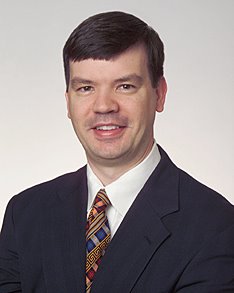 Just like when your wife or girlfriend asks "Do I look fat in this?", it is surely the deadliest of traps when a cosmetic surgery patient asks you the open-ended "What do YOU think I need done?". Most Plastic Surgeons know not to take the bait with this question, but rather tease more out of the patient about what is concerning them.
Just like when your wife or girlfriend asks "Do I look fat in this?", it is surely the deadliest of traps when a cosmetic surgery patient asks you the open-ended "What do YOU think I need done?". Most Plastic Surgeons know not to take the bait with this question, but rather tease more out of the patient about what is concerning them.A careless phrase or suggestion can produce both anger and anguish to a patient. I still think I'm getting pain from a voodoo doll for my inadvertent pointing out a "witch's chin" deformity to a patient (Long story, read here to get up to speed).
Vanity Fair magazine put this to the test when they had a writer go "undercover" on three consults for cosmetic surgery. (The article can be viewed here). One with a Manhattan Plastic Surgeon (whom I've actually heard of), one with an ENT trained "cosmetic surgeon" (who notably was sanctioned for defrauding Medicare in 2003 - Don't these people use Google?), and one osteopathic (a DO as opposed to an MD degree) surgeon who'd trained in an osteopathic plastic surgery residency.
Note: There is really nothing about Plastic Surgery as a discipline that is related to osteopathic tenants. As the mystical snake-oil aspects of osteopathic medicine, like manipulation, have largely been shed from their curriculum, a DO and MD education is now practically similar. As there are only a handful of DO plastic surgery programs, I'm assuming this guy would have been an intelligent guy and good resident to get a position. End of editorial!
The writer's first consult was with the Plastic Surgeon, who came off really, really, really cheesy.
"Now the doctor and I stand in front of the floor-length mirror while he deconstructs the “before” me. “As a Caucasian woman, you probably—if you were doing lipo—would want this brought down,” he says, pointing to my “banana rolls”—his clever name for the part of my rear end that peeks from beneath my underwear lining. “And again, you know, in jeans, to most people … on white women, you guys like to get this down. And we like to see it down.” I gulp, realizing that I’ll never be able to eat my favorite fruit again without thinking of my own ass....
Back in the Upper East Side exam room, Dr. R******* pinches me from shoulders to knees before concluding: “You look absolutely nice, but, even if I were a blind guy and put my hands here”—he seizes my sides—“there are little lumps. This could be brought down just to give you a little bit better of a curve.” These lumps, I learn, are my “waist wads.” To his credit, Dr. R******* does note that my “waist wads” are “borderline.” But, he says, “I’ve done supermodels with much less than this. To them it was important. To each his own.”
He prefaces his conclusion with a hypothetical scenario: “I think if I were a single plastic surgeon, which I’m not, riding around in my Corvette, which I don’t, my license plate would read full c. O.K.? That would be my license plate. So that’s what I would think, in general, is the Promised Land of Breasts for most people.”
OMFG. Is this guy for real? I'll give him the benefit of the doubt that some of his comments were selectively edited, but I cannot imagine most of his peers would consider that language and tone very professional. Pushing services, as opposed to passive advice, is not how most experienced surgeons would teach their residents to act. I know we weren't. There was a well known surgeon in Louisville who was notorious for telling women at social events that that they needed a face lift. The funny thing was that on a number of occasions this surgeon had actually already done a face lift on that patient and just failed to recognize both the patient and his work. Open mouth, insert foot!
The other two consults described were actually much tamer and more professional IMO except for the part where the ENT's office manager offers to show off her implants to the prospective client. Chez tacky! Props to young Dr. Joseph A. Racanelli D.O., who despite being the least experienced, gave the most appropriate response to the honey trap offered by Vanity Fair.
Rob









